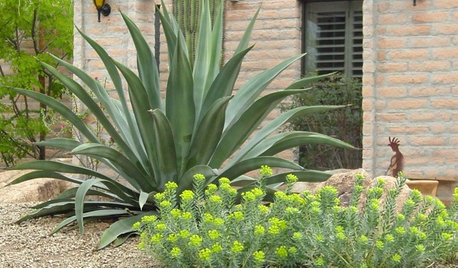Saving, storing and planting Seeds
Pallida
11 years ago
Related Stories

GARDENING GUIDESHow to Plant a New Lawn From Seed
Choose from more grass varieties and save money over sod by starting your lawn from seed
Full Story
CONTAINER GARDENS8 Easy Container Plants to Grow From Seed
Get beautiful blooms and herbs in summer by starting these choice garden picks from seed in spring
Full Story
GARDENING GUIDESSeeds or Seedlings? How to Get Your Garden Started
Growing delicious herbs and vegetables starts with knowing your goals and when you want to plant
Full Story
GARDENING GUIDES8 Unthirsty Plants Help You Save Water in Style
Spend less effort and money on your landscape with drought-tolerant and native plants that liven up your yard
Full Story
GARDENING GUIDESHow to Spot a Drought-Tolerant Plant
Label? Who needs a label? Learn the characteristics of plants that can thrive in hot, dry conditions to help you pick the right ones
Full Story
SAVING WATER6 Reasons Why You Should Save Your Rainwater Now
Collect and store during the rainy season so you’ll have water ready for irrigation when you need it
Full Story
LIFEThe Top 5 Ways to Save Water at Home
Get on the fast track to preserving a valuable resource and saving money too with these smart, effective strategies
Full Story
LANDSCAPE DESIGNGet Along With Less Lawn — Ideas to Save Water and Effort
Ditch the mower and lower your water bill while creating a feast for the eyes with diverse plantings and gathering places
Full Story
GARDENING GUIDESInvite Mining Bees to Your Garden by Planting Their Favorite Plants
Look for mining bees (Andrena) pollinating woodland wildflowers in U.S. gardens this spring
Full StoryMore Discussions







chickencoupe
Lisa_H OK
Related Professionals
New Bedford Landscape Architects & Landscape Designers · Glendora Landscape Architects & Landscape Designers · Broadlands Landscape Contractors · Hollywood Landscape Contractors · St. Louis Landscape Contractors · Tuscaloosa Landscape Contractors · Vashon Landscape Contractors · Yuba City Landscape Contractors · Cave Spring Decks, Patios & Outdoor Enclosures · Dracut Decks, Patios & Outdoor Enclosures · Haddonfield Decks, Patios & Outdoor Enclosures · Los Alamitos Decks, Patios & Outdoor Enclosures · Novi Decks, Patios & Outdoor Enclosures · Rosemont Decks, Patios & Outdoor Enclosures · South Milwaukee Decks, Patios & Outdoor EnclosuresOkiedawn OK Zone 7
PallidaOriginal Author
Lisa_H OK
TraceyOKC
PallidaOriginal Author
Lisa_H OK